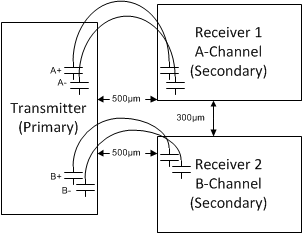I have questions about UCC21520.
Attachment is figure of digital isolator.
Does UCC21520 have the same structure?
Please tell us the internal suructure of Reinforced Isolation between primary and secondary.
Please tell us the Creepage distance.
Is the coupling capacitor between the primary side and the secondary side in the device double insolated?
Best regards,
Takahiro Nishizawa


